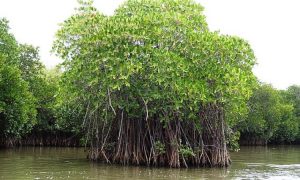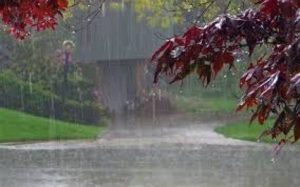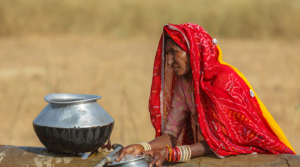 Dr. P. K. Jena in Bhubaneswar, July 15, 2022: India is in water stressed region of the world. Nearly fifty percent people in India at present do not get enough drinking water throughout the year. In recent years, due to rapid industrialization and urbanization, most of its wetlands and forests have been lost and as a result a large amount of rain water is draining out to the ocean through rivers.
Dr. P. K. Jena in Bhubaneswar, July 15, 2022: India is in water stressed region of the world. Nearly fifty percent people in India at present do not get enough drinking water throughout the year. In recent years, due to rapid industrialization and urbanization, most of its wetlands and forests have been lost and as a result a large amount of rain water is draining out to the ocean through rivers.
Besides, the wastes and effluents of industries and urban areas are polluting the rivers and other water bodies as well as the groundwater to a large extent.
Mismanagement and misuse of water are highly responsible for the crisis. In India, the emphasis is generally given to develop water resource rather than managing it properly. The emphasis has been on supply of water for uses in agriculture, domestic, industry and hydropower sectors but the focus is not very much on the demand side and its effective management.
Unless proper water management plan is developed and timely implemented, the present crisis may be more severe during the years to come In view of this, the following minimum programme to mitigate water crisis need to be seriously considered, planned and executed.
a) Checking Water Quality and Adoption of Better Water Transport System
Considerable capital costs can be saved on projects for proper management of water demand. Let us take a bright example of the lacuna in demand management with respect to urban India. In the process of supplying water to various urban areas, it has been estimated that unaccounted water is almost over 40%. Further, many times the importance of quality of water supplied for domestic consumption is lost sight off. As a result, the urban communities suffer from water borne and water related diseases. It should be fast and foremost task for the concerned authority to incorporate schemes for effective control of quality of water as well as for undertaking systematic steps to stop the wastage like leak detection in water transport pipes so that the unaccounted for water percentage can be minimized.
b) Wetland Development
 Wetland plays an important role in augmenting water resource and protecting water quality, maintaining balanced ecosystem of the region and providing socio economic benefits. Direct benefits that, human beings derive from wetland include production of fresh water, fish etc. and effecting movement of water into streams and rivers. The indirect benefits include flood control, recharge of aquifer and storm protection. During last century, India has lost nearly 50% of its wetland due to human settlements, urbanization, industrialization and agricultural activities. Some of the major human activities responsible for destruction of wetland in India are given in Table – I.
Wetland plays an important role in augmenting water resource and protecting water quality, maintaining balanced ecosystem of the region and providing socio economic benefits. Direct benefits that, human beings derive from wetland include production of fresh water, fish etc. and effecting movement of water into streams and rivers. The indirect benefits include flood control, recharge of aquifer and storm protection. During last century, India has lost nearly 50% of its wetland due to human settlements, urbanization, industrialization and agricultural activities. Some of the major human activities responsible for destruction of wetland in India are given in Table – I.
Table – I
Major human activities leading to destruction of wetland
Sl No Human Activities
1 Hydrologic Alteration
2 Agricultural activities
3 Pollution
4 Legal-policy failures
5 Direct deforestation in wetlands
6 Inundation by dammed reservoirs
7 Degradation of water quality
8 Global climate change effects
9 Ground-water depletion
10 Introduced species- extinction of native biota
In order to increase water resource both on surface and in aquifer, it is highly essential to protect the natural as well as manmade wetlands. Therefore, wetland development and management should be given high priority. The primary and secondary objectives of wetland management are given in the Table – II.
Table – II
Primary and Secondary Objectives
| Primary Objectives | Secondary Objectives |
| Production of Food (Including Pisciculture) | Production of Commercial Reeds and Other Crops (Including Bio-Fertilizers and Cattle Fodder) |
| Improvement of Wastewater Quality | Using Wetland as Buffer Between Industrial and Other Urban Activities or Saline and Non-saline Segments |
| Ground Water Recharge | Reduction of Soil Erosion, |
| Flood Control and Water Storage | Providing Recreational and Aesthetic Benefits |
| Drainage Easement | – |
| Wildlife Conservation Including Habitat for Fish Spawning | – |
| Reduction of Atmospheric Pollution and Temperature Moderation | – |
| Conducting Scientific Enquiry and Desirable Land Use Studies | – |
c) Rain Water Harvesting
 Most parts of India receive good amount of rain water but large portion of this water is hurriedly goes back to ocean through rivers and streams. If this rain water is harvested both on surface and injected to aquifer, there should be no water scarcity in most part of the country.
Most parts of India receive good amount of rain water but large portion of this water is hurriedly goes back to ocean through rivers and streams. If this rain water is harvested both on surface and injected to aquifer, there should be no water scarcity in most part of the country.
Further, the problem of water shortage both in arid and semi arid regions is low rain fall and uneven distribution throughout the year, thus, making rain fed agriculture quite risky. Agricultural sector consumes nearly 70%, industry 20% and domestic sector 10% of water resource. In order to meet these requirements rain water harvesting programme should be well planned and implemented both in rural and urban areas.
In recent decades, the traditional water harvesting techniques are gaining popularity being simple, sure to implement and low capital investment. However, water harvesting methods depend on local conditions and include practices such as bunding, pitting, micro catchment, flood water and ground water harvesting etc.
In this regard, it may be mentioned that, a few decades back, in Balangir district of Odisha where traditional water harvesting structures were used, more than 52% of agricultural land could be irrigated. But now, the modern irrigation projects applied in this region failed to achieve even this target. The traditional water harvesting systems adopted in western Odisha were developed centuries back.
These include bandh (Traditional Pond), Munda (semicircular structure), Kata (a larger munda), Chahala (rectangular tank dug within a paddy field without any embankment), and Sagar (a structure measuring around 8 hectors and situated just below hills). These systems were developed keeping in view, the topography of the region, rainfall and the extent of water needed locally.
The structures were used for harvesting rain water by managing very skillfully and keeping the bio-diversity and ecology of the region in good shape. The management systems were very well framed to benefit the largest possible number of people in the region with minimum cost. It is suggested that, this type of rain water harvesting should be popularized so that, it will go a long way for solving water scarcity at least for agricultural activities.
d) Water Conservation
As agricultural activities consume major amount of available water in the country, water economy and conservation sectors have to be properly planned, monitored and managed. Besides harvesting rain water on small and medium scales at suitable sites, better irrigation methods like surface, sprinkler and drip irrigation should be practiced.
In both surface and sprinkle irrigation, nearly 25% of water is lost through evaporation, where as in case of drip irrigation only 5% loss takes place. In Israel, due to acute water scarcity nearly 50% of agricultural land in that country adopts drip irrigation. In India, efforts should be made to develop cheap drip irrigation equipment and this should be popularized by subsidizing the system.
The Government should encourage farmers to grow crops needing less water and also develop methods using less water for crop production. For example, experiments in Guangxi Province of China have proved that, at some stages of growth, paddy benefits from lower water levels and it has been possible to grow more rice using less water. In the past, by using 5907 m3 of water, it was possible to grow 5866 kg of rice by the conventional method, where the paddy fields were continually submerged in water. But, applying the new technique, it has been possible to increase rice yield to 6534 kg by using only 4659 m3 of water.
e) Water Pricing
 We should now realize that, rain water may be a nature’s gift but water which is used particularly for drinking and other domestic purposes when supplied to the consumers, a lot of public money is spent on its purification and supply. This amount should be recovered from the users. Therefore, the users including farmers, industries and commercial organizations should pay for the water supplied.
We should now realize that, rain water may be a nature’s gift but water which is used particularly for drinking and other domestic purposes when supplied to the consumers, a lot of public money is spent on its purification and supply. This amount should be recovered from the users. Therefore, the users including farmers, industries and commercial organizations should pay for the water supplied.
Pricing of water should be done to provide revenue to recover all expenditures to make the water utility self supporting and also for providing funds for future expansion. In this way, dependence on outside capital is minimized. For all user sectors, water tariff rate should increase with increase in consumption slabs, so that the users can be economical in water consumption.
The price paid by consumers has generally direct influence on the amount of water used. Pricing tariff based on consumption discourages wastes. In case of supply of water to households and smaller agricultural farmers particularly to the people in lower income group, suitable subsidies should be given.
In recent years, due to dearth of fresh drinking water, there is a tremendous growth of water supply industries. In this process in proportion to the income, the poor class pays much more than the rich ones. In view of this, the Government should take immediate steps to provide drinking water to all with minimum tariff and free of cost for people below poverty level and for nominal rate to people of low income group.
India is presently facing acute shortage of fresh water for its growing population and commercial organizations. In addition to wastage, a large amount of water is being polluted by solid wastes and effluents generated in industries and urban areas. These should be taken care of by keeping the wastes away from water bodies and adopting better transportation and supply systems. In view of this, it is essential to plan and implement the above five programmes to mitigate water crisis.
• Former Director General, Council of Scientific & Industrial Research, India



Leave a Reply
Be the First to Comment!